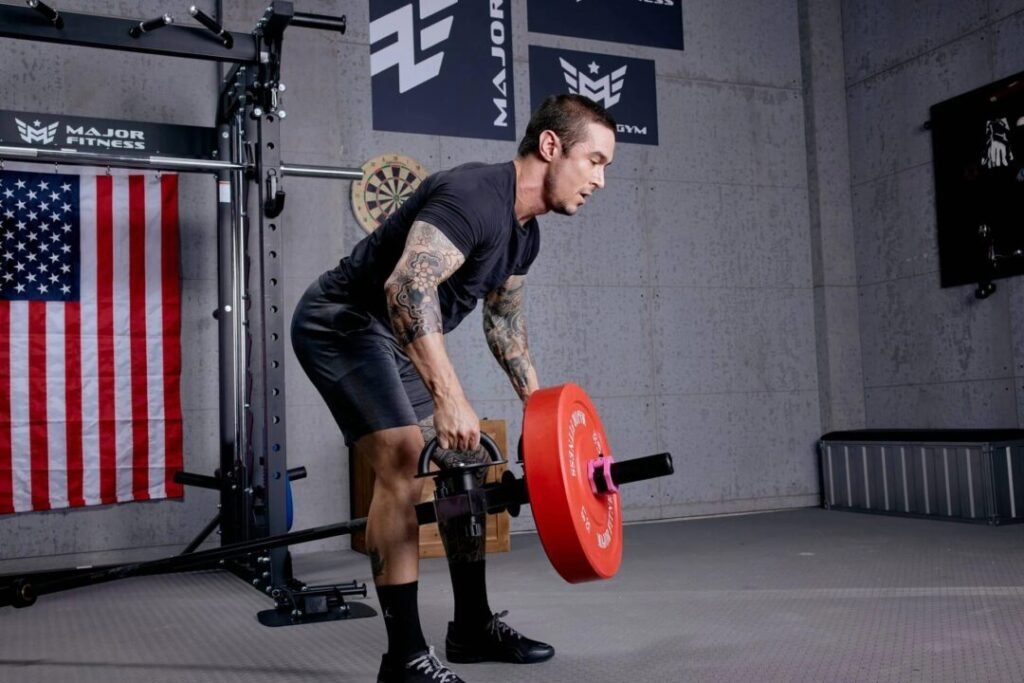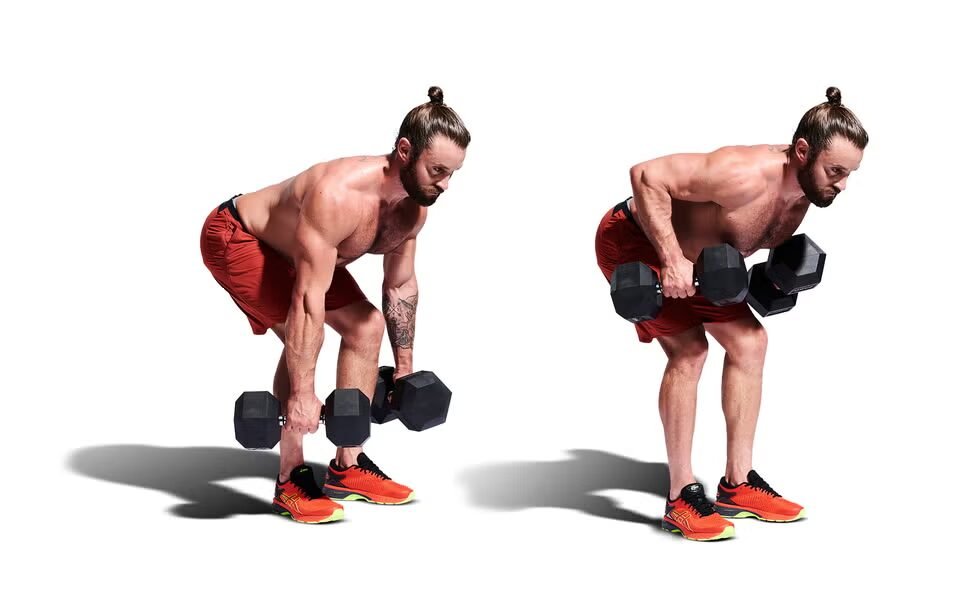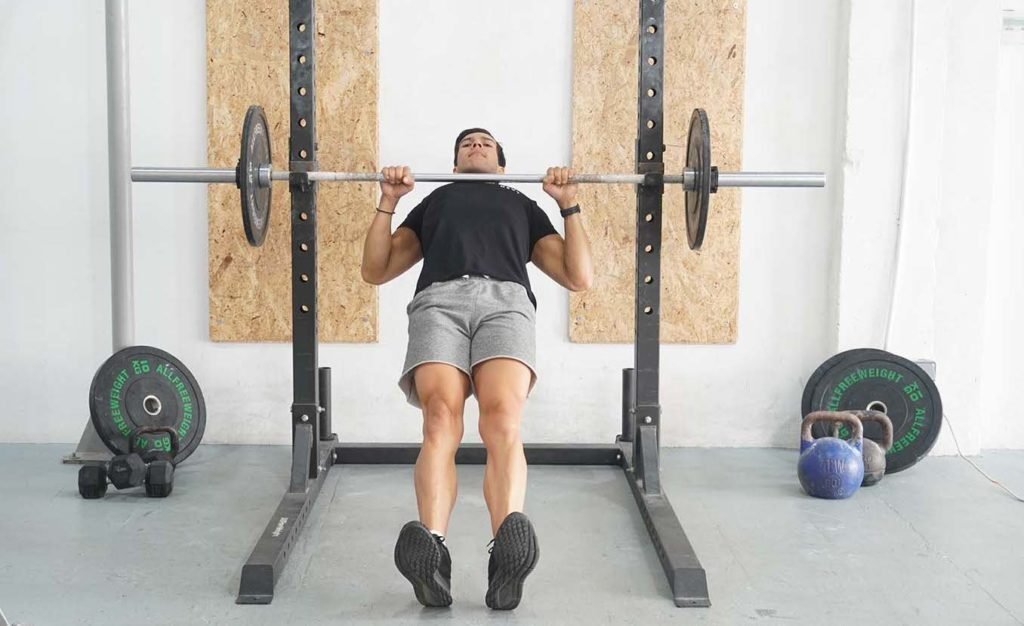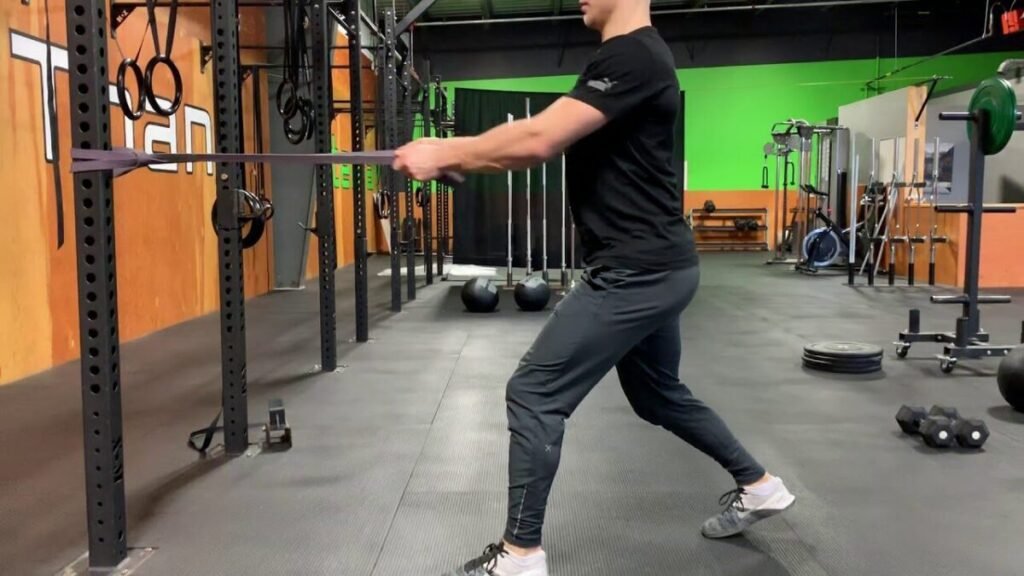Introduction
The T bar row is one of the most great exercises for structure a thick, strong, and strong back. Unlike easy pull actions, the T bar row allows you to lift heavy weights with banned form, goal your lats, traps, rhomboids, and erector spinae. This apply has become a attach for athletes, bodybuilders, and force enthusiast because it create that opaque, 3D look in the back while also calming overall pull force.
In this thorough guide, we’ll discover everything you require to know about the T bar : its account, payback, proper form, variation, mistake to avoid, and how to add it into your exercises routine. Whether you’re a learner or superior lifter, this implement can wholly change the way your back looks and perform.
Table of Contents
What is a T Bar Row?
The T bar is a complex muscle teaching train perform by pull a loaded barbell set at one end (typically in a landmine setup) toward the chest while custody the torso hinged onward. The group mimic a bent-over row but with more steadiness, allow you to load heavier weights carefully.

It gets its name from the “T-shaped” bar used in customary gym, but today many variation exist, counting landmine attachment, V-handle grip, and mechanism version.
Key Muscles Worked in T bars
| Muscle Group | Role in the Exercise |
| Latissimus Dorsi (Lats) | Primary mover, responsible for pulling the bar towards the torso |
| Rhomboids | Retract the shoulder blades during the row |
| Trapezius (Traps) | steady and promote the scapula |
| Erector Spinae | Keep the backbone neutral and steady |
| Rear Deltoids | Assist in pulling motion |
| Biceps | Secondary movers, assist in flexing the arms |
This combination makes the T bar an excellent compound lift for overall back development.
Benefits of the T Bar Row
The T bar isn’t just another pulling movement—it’s a powerful strength builder with unique advantages over other row variations.
1. Builds a Thick, Muscular Back
The T bar row emphasize the center back, create the thick, opaque look bodybuilders strive for. Unlike pull-ups (width) or lat pulldowns, this association adds depth and thickness.
2. improve bearing
since it strengthen the rhomboids, traps, and erector spinae, it helps right round shoulders and poor stance cause by sitting.
3. Safer Than Barbell row
With the bar set at one end, the T bar reduce strain on the lower back compare to unproven bent-over rows. This make it more beginner-friendly.
4. enhance pull Power
athlete who rely on pull strength (wrestlers, swimmers, rowers) profit really from the raw pull power build with this raise.
5. flexibility
With diverse grips (wide, close, impartial, underhand), you can stress different muscle, creation it a resourceful back train.
Proper Form: How to Do T Bar Rows properly
Mastering form is the basis of this group. Done wrongly, it can strain your lower back. Done correctly, it’s one of the safest and most effectual back builders.
Step-by-Step direct:
- Setup: Place a barbell into a landmine accessory or hold it in a turn. Load heaviness dishware on the gratis end.
- grasp: Use a close-grip V-handle or grab the bar straight with overhand grip.
- posture: situate over the saloon with feet shoulder-width apart, knee somewhat bent.
draw: Row the bar near your chest, squeeze your shoulder blade jointly at the top.
Lower: leisurely return the bar to initial location under direct.
Pro Tips
- Keep your chest up and spine impartial.
- Avoid jerk or using impetus.
- Exhale as you pull, gulp as you lower.
ordinary mistake to shun
Even knowledgeable lifters make mistake with the T bar. avoid them ensure utmost gains and wound avoidance.
1. Rounding the Back – Leads to spinal strain and poor muscle activation.
2. Using Momentum – Swinging reduces tension on muscles and risks injury.
3. Partial Range of Motion – Cutting the movement short prevents full engagement of lats and traps.
4. Excessive Weight – Going too heavy sacrifices form and increases injury risk.
Shrugging the Shoulders – Turns the exercise into a trap-dominant move instead of a full row.
T Bar Row Variations for All Levels

One of the major reward of this implement is its flexibility. diverse grips and tackle can wholly modify the feel of the association.
1. Landmine T bar (Classic)
Performed with a barbell and landmine attachment—simple, effective, and versatile.
2. Machine T Bar Row
A chest-supported version found in most gyms. Reduces strain on the lower back while keeping strict form.
3. Close-Grip T bar
Targets the inner lats and rhomboids for thickness.
4. Wide-Grip T Bar Row
Shifts focus toward the upper back and rear delts, adding width.
5. Single-Arm Landmine Row
Unilateral version for correcting imbalances and strengthening stabilizers.
6. Meadows Row
Popularized by bodybuilder John Meadows—performed one side at a time with a barbell in a landmine. Extremely effective for upper back.
T Bar Row vs. Other Back Exercises
How does the T bar stack up against other pulling movements?
| Exercise | Primary Benefit | Limitation |
| T Bar Row | Best for thickness and mid-back strength | Requires landmine or machine setup |
| Barbell Row | Versatile, engages stabilizers heavily | Higher risk of lower back strain |
| Dumbbell Row | Unilateral, corrects imbalances | Limited weight capacity |
| Pull-Ups | Great for width and lats | Harder for beginners |
| Seated Cable Row | Constant tension | Less free-weight strength carryover |
Clearly, theT bar offers a balance of safety, heavy loading, and muscle recruitment that makes it superior for thickness.
What is a T Bar Row?
The is a complex strength teaching exercise perform by pull a loaded barbell fixed at one end (usually in a landmine setup) near the chest while custody the torso hinged onward. The association mimic a bent-over row but with more steadiness, allow you to load heavier weights carefully.
It gets its name from the “T-shaped” bar used in traditional gyms, but today many variations exist, including landmine attachments, V-handle grips, and machine versions.
Key Muscles Worked in T Bar Rows
| Muscle Group | Role in the Exercise |
| Latissimus Dorsi (Lats) | Primary mover, responsible for pulling the bar towards the torso |
| Rhomboids | Retract the shoulder blades during the row |
| Trapezius (trap) | steady and raise the scapula |
| Erector Spinae | remain the spine impartial and firm |
| Rear Deltoids | Assist in pulling motion |
| Biceps | Secondary movers, assist in flexing the arms |
This combination makes the T bar row an excellent compound lift for overall back development.
Benefits of the T Bar Row
The T bar row isn’t just another pulling movement—it’s a powerful strength builder with unique advantages over other row variations.
1. Builds a Thick, Muscular Back
The T bar row emphasize the heart back, create the thick, dense look bodybuilders strive for. dissimilar pull-ups (width) or lat pulldowns, this association adds depth and thickness.
2. improve bearing
since it strengthen the rhomboids, traps, and erector spinae, it helps accurate round shoulders and poor stance cause by session.
3. Safer Than Barbell Rows
With the bar set at one end, the T bar row reduce strain on the lower back compare to unconfirmed bent-over rows. This make it more beginner-friendly.
4. enhance pull Power
athlete who rely on pull might (wrestlers, swimmers, rowers) profit really from the raw pull rule built with this lift.
5. flexibility
With dissimilar grip (wide, close, impartial, underhand), you can stress diverse muscle, creation it a flexible back train.
correct Form: How to Do T Bar Rows properly

Mastering shape is the basis of this association. Done imperfectly, it can injure your lesser back. Done correctly, it’s one of the safest and most efficient back builders.
slowly direct:
- system: Place a barbell into a landmine accessory or lodge it in a corner. weight heaviness plates on the free end.
grasp: Use a close-grip V-handle or clutch the bar straight with overhand grip. - posture: Stand over the bar with foot shoulder-width separately, knees weakly bent.
- pivot: Bend at the hips until your trunk is about 45 degree to the floor. remain your back straight and core braced.
- Pull: Row the bar near your chest, squeeze your shoulder blade jointly at the top.
inferior: gradually revisit the bar to starting location under organize.
Pro Tips
- Keep your trunk up and vertebrae impartial.
- evade jerk or using impetus.
Exhale as you pull, inhale as you inferior.
ordinary mistake to shun
Even skilled lifters make mistake with the T bar row. avoid them ensure utmost gain and damage escaping.
- Rounding the Back – Leads to spinal strain and poor muscle activation.
- Using Momentum – Swinging reduces tension on muscles and risks injury.
- Partial Range of Motion – Cutting the movement short prevents full engagement of lats and traps.
- Excessive Weight – Going too heavy sacrifices form and increases injury risk.
- Shrugging the Shoulders – Turns the exercise into a trap-dominant move instead of a full row.
T Bar Row Variations for All Levels
One of the major reward of this implement is its flexibility. diverse grips and tackle can entirely modify the feel of the association.
1. Landmine T Bar Row (Classic)
Performed with a barbell and landmine attachment—simple, effective, and versatile.
2. Machine T Bar Row
A chest-supported version found in most gyms. Reduces strain on the lower back while keeping strict form.
3. Close-Grip T Bar Row
Targets the inner lats and rhomboids for thickness.
4. Wide-Grip T Bar Row
Shifts focus toward the upper back and rear delts, adding width.
5. Single-Arm Landmine Row
Unilateral version for correcting imbalances and strengthening stabilizers.
6. Meadows Row
Popularized by bodybuilder John Meadows—performed one side at a time with a barbell in a landmine. Extremely effective for upper back.
How to Program T Bar Rows into Your Routine

Adding the T bar row into your workout routine depends on your training style, goals, and overall split. Since it’s a compound pulling exercise, it fits naturally into back days, pull days, or full-body programs.
1. Frequency
- Beginners: 1–2 times per week
Intermediate: 2 times per week (different variations) - Advanced: Up to 3 times per week with controlled volume
2. Sets and Reps
- force center: 4–6 set of 4–6 rep (serious, volatile pull)
- Hypertrophy center: 3–4 set of 8–12 rep (modest burden, proscribed clutch)patience/training: 3–4 set of 12–15 rep (lighter heaviness, superior quantity)
3. Placement in a Workout
The T bar row should generally come after your main compound lift (like deadlifts or squats) but before isolation moves (like face pulls or biceps curls).
Advanced Training Techniques for T Bar Rows
If you’re an intermediate or advanced lifter, you can spice up your T bar rows with these strategies:
1. Rest-Pause Training
Do a heavy set, rest 15 seconds, then continue lifting until failure. Great for hypertrophy.
2. Drop Sets
Start heavy, then reduce weight immediately and keep rowing until burnout.
3. Iso-Hold at Peak Contraction
Hold the bar at the top position (squeezed shoulder blades) for 2–3 seconds per rep.
4. Partial Reps at End of Set
After failing full reps, continue with short partial reps for maximum fatigue.
5. Superset with Pull-Ups
Combine width and thickness in one brutal superset for full back activation.
Who Should Do T Bar Rows?
The T bar row can benefit nearly everyone, but the approach differs based on goals and fitness levels.
Beginners
- Should start with lighter weights and focus on form.
- Machine or chest-supported versions are safest.
Intermediate Lifters
- Can use free-weight landmine T bar rows.
- Focus on progressive overload and variation.
Advanced Lifters
- Can handle heavy loads with perfect form.
- profit from superior method like meadow rows, rest-pause, and supersets.
athlete
- Great for wrestlers, rowers, swimmers, and MMA battalion need pull control.
security Tips and damage avoidance
While safer than countless other row variation, the T bar row can still grounds issues if done rudely.
- tepid Up First: forever trigger your back and shoulders prior to serious row.
- impartial back: Keep your inferior back tight and shun rounding.
- connect Core: support your abs through the association.
Don’t Overload: Choose weights you can control with strict form. - Use Lifting Belt (Optional): Helpful for very heavy sets.
Why Bodybuilders Love the T Bar Row
mythology like Arnold Schwarzenegger, Ronnie Coleman, and John meadow used the T bar row as a basis of their back teaching. The reason? It builds that dense, cobra-shaped back that defines elite physiques.
Arnold often said that rowing movements are the secret to back thickness, and the T bar row allows more weight and control than dumbbell or barbell rows.
T Bar Row for Strength vs. Hypertrophy
The T bar row is enormously flexible, but the way you train it determine your fallout. Some athlete train it for pure force, while others use it largely for muscle increase (hypertrophy).
teaching for force
- grave weight, low rep (4–6)
- Focus on volatile pull and full organiz
- Longer rest period (2–3 record)
- model for powerlifters, athlete, and battalion
teaching for Hypertrophy
- modest weight, senior reps (8–12)
- stress on mind-muscle association
banned strange (lowering) section - Shorter rest (60–90 second)
- Ideal for bodybuilders and build athlete
Both advance have their place, but blinking phases of force and hypertrophy teaching ensure nonstop growth.
T Bar Row for Beginners vs. Advanced Lifters
Beginners
- Start with a machine T bar row or chest-supported version.
- heart on education proper hinging and scapular withdrawal.
- glue to 2–3 set of 10–12 rep with light weights.
Advanced Lifters
- Can progress to free-weight landmine rows.
Use heavy dishware, superior grips, and teaching method. - include strength technique like rest-pause and drop set.
This steady sequence ensure security and long-term gain.
T Bar Row and Functional Fitness
Beyond bodybuilding, the T bar row carries over to real-life strength. Because it trains the posterior chain (back, core, and grip), it improves:
- Pulling strength for climbing, rowing, and grappling
- Core stability for lifting objects in daily life
- Postural force to offset sitting and slouch
This makes it highly efficient for practical force athletes like CrossFit competitor, MMA fighters, and strategic professional.
T Bar Row vs. Deadlift
Many lifters wonder: if the deadlift is already a powerful back builder, is the T bar row necessary?
| Feature | Deadlift | T Bar Row |
| Type | Full-body compound | Back-focused compound |
| Muscles Worked | Back, legs, grip, traps | Mid-back, lats, rhomboids |
| Strength Carryover | Great for overall power | Great for pulling strength |
| Risk | Higher injury potential if misused | Safer due to fixed bar |
| Volume Use | Best for low reps | Best for moderate to high reps |
Conclusion: Deadlifts build raw strength, but T bar rows add thickness and detail that deadlifts alone cannot provide.
Best T Bar Row Alternatives

Sometimes you may not have access to a T bar setup. Here are excellent alternatives:
- Bent-Over Barbell Row – Closest substitute, engages stabilizers more.
- Dumbbell Row – Great unilateral option, prevents imbalances.
- Seated Cable Row – Constant tension, multiple grip variations.
- Inverted Rows – Bodyweight alternative, scalable with foot placement.
- Pendlay Row – Explosive row from the floor, builds power.
- These can temporarily replace the T bar row but should not completely substitute it long term.
nourishment and mending for Back increase
teaching hard on T bar rows is just half the battle—nourishment and upturn play an regularly imperative role.
strong Fats: carry hormones with source like olive oil, nutty, and salmon.
- Hydration: Back muscles need proper hydration to improve and indenture proficiently.
- snooze: At least 7–9 hours per nighttime for force upturn
lacking correct fuel and rest, even the best train won’t transport fallout.
E.E.A.T. (Experience, Expertise, Authority, Trustworthiness) in Back Training
When applying Google’s E.E.A.T. framework to fitness advice, here’s why the T bar row is a trustworthy exercise:
- skill: Used for decades by athlete and bodybuilders universal
- knowledge: optional by force coach and corporeal therapist.
- Authority: feature in research, bodybuilding encyclopedias, and games training manual.
- Trustworthiness: Safe and effective when performed with correct form.
This is why T bar rows remain one of the most trusted compound lifts in back training.
Final Thoughts
The T bar row is more than just another gym train—it’s a proven back-building inspiration. By mastering its form, apply progressive surplus, and incorporate variation, you can achieve:
A thicker, stronger, and more definite back
better stance and summary damage risk
Greater functional strength and athletic performance
Whether you’re a learner learning proper form or an complex athlete chase new minutes, the T bar row deserve a lasting spot in your education plan.
FAQs About T Bar Rows
1. Are T bar rows better than barbell rows?
Both are excellent, but T bar rows are safer for beginners due to less lower back strain. Barbell rows, however, build stabilizer strength more.
2. How much burden should I use on T bar rows?
create light (just the bar or one coat) and increase steadily. Focus on strict form before leaving grave.
3. Can I replace pull-ups with T bar rows?
No, they target different aspects of the back. Pull-ups build width, while T bar rows build thickness. Both should be included.
4. Is the T bar row good for beginners?
Yes, especially the chest-supported machine version. basic should shun ego elating and prioritize form.
5. How repeatedly should I do T bar rows?
Most lifters profit from 1–2 times per week, depending on overall teaching level.
Also Read This: Discover the Timeless Value of Second Hand Bag Withher-Age: A Power Trend for Smart Shoppers 2025
